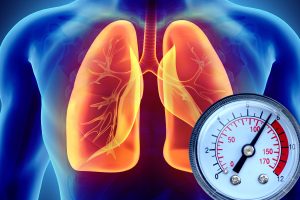Dr Binay Kumar
The World Hypertension Day, observed on May 17 every year, helps people realise that hypertension or high blood pressure is a preventable and controllable condition. Moving blood exerts force on the arterial wall this is called blood pressure. Systolic blood pressure is a force when heart beats and diastolic blood pressure is a force between the beats. There is a range of blood pressure. Normal blood pressure range are SBP 90 – 120 and DBP 60 – 80. These numbers are measured in millimetres of mercury (mmHg). Below this range is called low blood pressure or hypotension and above this range is called high blood pressure or hypertension.
High blood pressure exerts abnormal strain on the heart and arteries, and it can eventually lead to:
- Blood vessel damage (atherosclerosis)
- Heart attack
- Stroke
- Heart failure
- Kidney failure
- Eye damage
In 2017 by the American College of Cardiology/American Heart Association (ACC/AHA) proposed definition of high blood pressure
- Normal blood pressure — Less than 120 over less than 80.
- Elevated blood pressure — 120 to 129 over less than 80.
- Hypertension
- Stage 1: 130 to 139 over 80 to 89
- Stage 2: At least 140 over at least 90

Hypertension is diagnosed on multiple readings of high blood pressure. Some things can make high blood pressure more likely. For example:
- Being older /getting older (as we age, blood vessels get stiffer)
- Being very overweight
- Drinking too much alcohol
- Our genes
- Eating too much salt
- Having diabetes
- Smoking
- Experiencing prolonged stress
- In some cases, having low levels of potassium in diet
Other health conditions such as sleep apnea, chronic kidney disease, thyroid disease, and high blood pressure during pregnancy (preeclampsia) can trigger high blood pressure.
How to check blood pressure at home?
When it’s time to check your blood pressure:
- Empty bladder first
- Avoid caffeine, smoking, exercise 30 minutes before BP measurement
- Sit in a chair with your feet flat on the ground.
- Keep legs uncrossed.
- Back supported by chair not sofa
- Try to breathe normally and stay calm.
- Relax for at least five minutes
- Support arm at heart level
- Choose correct cuff size
- Attach the cuff to your arm. Place the cuff directly on your skin, not over your clothing.
- The cuff should be tight enough to not slip down, but not uncomfortably tight
- Don’t have conversation
- Take at least two readings, one minute apart
How to prevent hypertension
Follow healthy life choices. Some examples of healthy choices include focussing on healthy eating including fresh fruits and vegetables lean protein and low-fat dairy, limiting your sodium intake by lowering how much salt you eat, limiting how much alcohol you drink, losing weight, if needed, and keep a healthy body weight, getting regular physical activity, finding stress-busting activities like yoga and meditation and avoid smoking have been shown to help lower blood pressure.
Dr Kumar is consultant, Interventional Cardiology, Fortis Memorial Research Institute, Gurugram